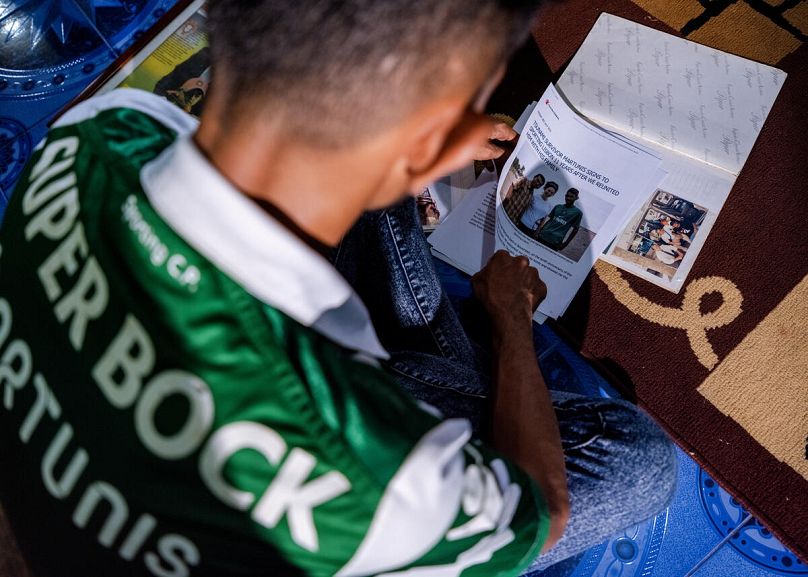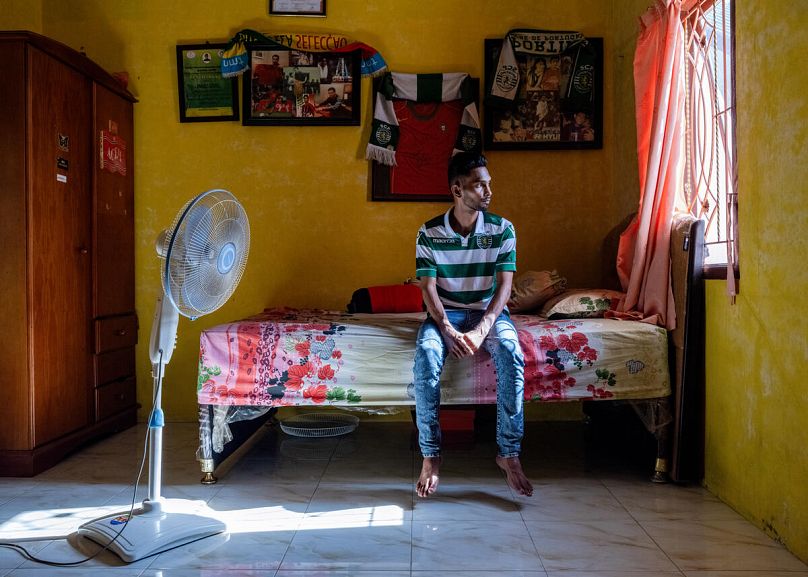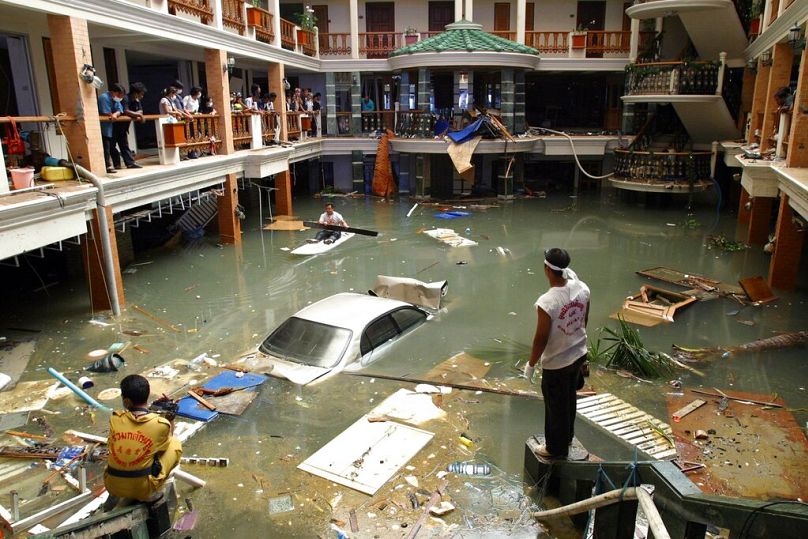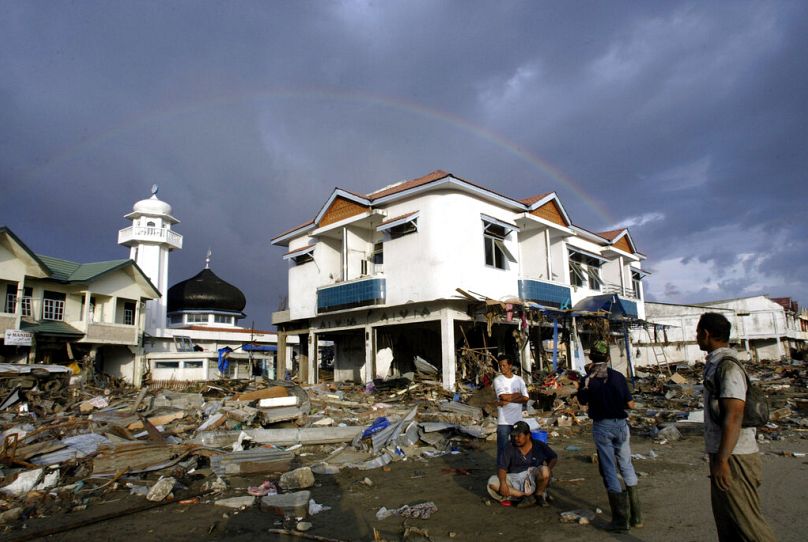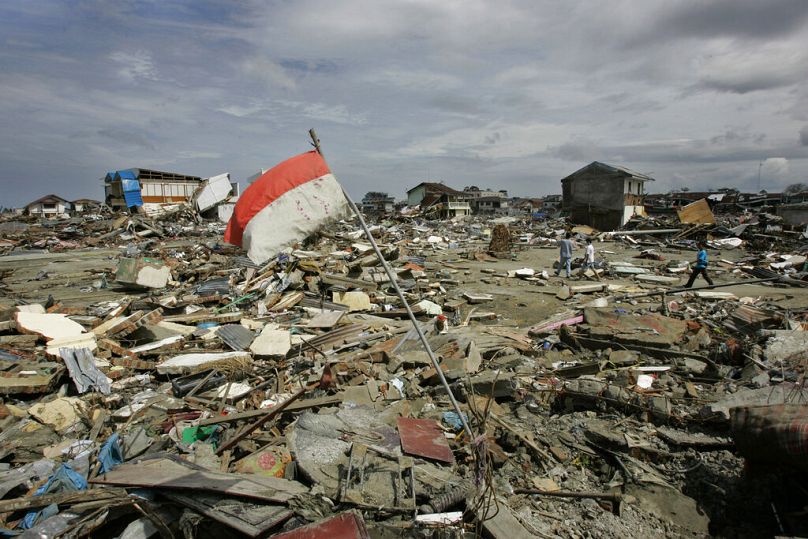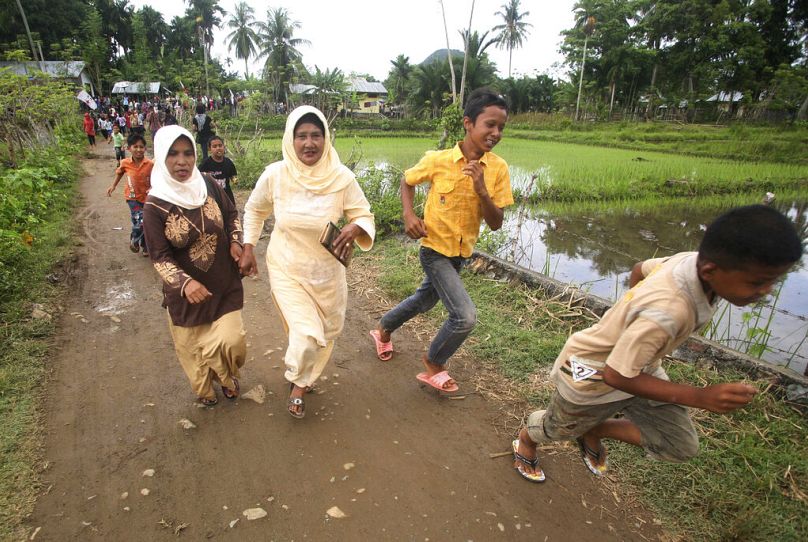How the 2004 Indian Ocean tsunami became a ‘wake up call’ for early warning systems
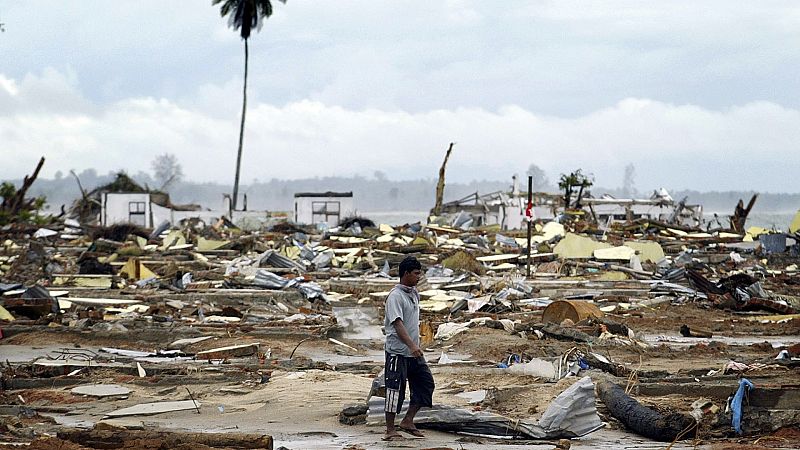
It has been 20 years since the 2004 Indian Ocean tsunami killed hundreds of thousands of people and caused widespread destruction across 15 countries.
At around 1 am local time on 26 December, a seismometer in Australia detected a massive 9.1 magnitude earthquake off the coast of Sumatra in Indonesia.
About 20 minutes after the earthquake, the resulting tsunami reached the coastline of Indonesia's Aceh Province. Waves up to 50 metres high washed over the region, travelling across the Indian Ocean at the speed of a jet plane.
More than 225,000 people were killed and two million were left homeless as coastal communities across Indonesia, Sri Lanka, India, Thailand and numerous other countries were inundated.
The tsunami was the deadliest natural disaster in the 21st century and one of the deadliest in recorded history. Head of UNESCO’s tsunami resilience programme, Bernado Aliaga, says it was a “wake-up call” for understanding the dangers of these events.
“At the time, we were not completely aware of some dangerous areas. Now we have a very sustainable and a very mature system.”
In the last 20 years, the legacy of this disaster has changed the face of tsunami science forever.
Remembering events 20 years on
Now 27, Martunis was just seven years old when the tsunami hit Aceh, tearing apart his life as he knew it.
“I was playing football with my friends when suddenly an earthquake struck,” he recalls.
“I rushed home and gathered with my mother, older sister, and younger sister, and we hugged each other. When our wardrobe fell due to the earthquake, my mother asked me to call my father, who was working at the fish farm, to come home.
“Someone shouted that the water was rising, so my mother, sisters, and I got into a pickup truck.”
The waters quickly closed in without warning and he and his family were hit by the tsunami. Martunis tried to drag his drowning sisters out of the water but the wave was too powerful and they were separated. He passed out several times, clinging to a mattress, a bench and even a coconut to stay afloat. Eventually, he found himself stuck in a tree. When he woke up he couldn't see anyone.
Three weeks later, Martunis was found in a swampy area near the beach by a British television crew filming with local fishermen. Malnourished and badly bitten by mosquitos, he’d survived on puddle water, packets of noodles and anything else he could find in among the debris.
“I didn’t realise I had been at sea for 21 days; it felt like only 3 days to me,” he says. He immediately asked about his mother and sisters but his father had to tell him that they had passed away.
Martunis was taken to a local hospital by charity Save the Children and reunited with his father and grandmother that same day.
Stories of death, terrifying ordeals, lost homes and families split apart are all too common among survivors of this deadly natural disaster. In the 20 years since it happened, scientists have been working tirelessly to prevent another similar event from bringing such widespread death and devastation.
‘We didn’t have an official way to tell anyone’
Around 700 million people around the world live in areas vulnerable to ocean hazards. That number is expected to reach one billion by 2050. While around 80 per cent of tsunamis are generated by earthquakes, they can also be triggered by underwater landslides and volcanoes.
There is a particular area that is most vulnerable to these disasters: nearly 70 per cent of all fatal tsunamis occur in the Pacific Ocean, and 90 per cent of deaths are caused by local or regional events that hit within just a few hours. But they can hit anywhere where there has been such an event before - that includes the Indian Ocean, parts of South America like Chile and Peru and even the Mediterranean.
These ‘short-fused’, no-notice hazards can impact communities within minutes if earthquakes occur close to the shoreline. They can’t be predicted and the next one could happen tomorrow. It makes providing warnings an immense technical and practical challenge.
In 2004, the data to help inform these warnings was limited. The tsunami risk was considered low in Indonesia, one of the worst-hit countries. There was little to no information on sea surface levels from the region, giving officials no way to ‘see’ the wave. Indonesia’s own seismometers could only record earthquakes up to a magnitude of 6.5.
Experts at the Pacific Tsunami Warning Center finally found out how destructive it had been via news stories about devastation in Thailand on the internet.
From there, they contacted embassies along Africa’s east coast to warn them about the incoming danger. It was a mess of improvised warnings that came too late for many in the Indian Ocean.
“I can simply say that 2004 was such a tragedy because there was no warning system in the sense that while we might have known there was an event, we didn't have an official way to tell anyone,” says Laura Kong, director of the International Tsunami Information Center in Honolulu, US.
How have early warning systems improved in the last 20 years?
Following the deadly event, the United Nations organised meetings to push for better preparedness across vulnerable nations like Indonesia and Samoa.
International centres and countries now monitor for earthquakes around the world 24 hours a day, 365 days a year. In total, massive improvements mean there are now around 150 stations in the global network.
Deep-ocean Assessment and Reporting of Tsunamis or DART buoys track changes in pressure on the seafloor to see if a tsunami has been generated. There are 75 of these buoys spread out across every ocean, covering all coastlines.
Where there was just one sea level monitoring station in 2004, there are now some 1,400 providing real-time data across the Indian Ocean. Improvements in tech mean information is transmitted much quicker too and faster supercomputers allow rapid modelling.
“In 2003…it took us about 15 to 20 minutes, perhaps up to 50 minutes, to actually know there was an earthquake and know there was a tsunami generated,” says Kong.
“Now, after 2004, thanks to more stations, better algorithms, we’re down to about five to seven minutes. So that gain of about 10 or 20 minutes has been a game-changer. It’s allowed us to actually provide warnings before the wave arrives.”
Indonesia in particular has developed its systems a lot since the deadly event and continues to adapt to each tsunami that hits the country. Ardito Kodijat, Head of UNESCO’s Indian Ocean Tsunami Information Centre, says the system has been tested several times since 2004.
“Within about seven minutes they can confirm to the 27 Indian Ocean countries that they are watching,” he explains, “So I think that's a big difference in terms of what happened in 2004.”
More than just early warnings
Preventing a massive number of casualties is about more than just providing rapid warnings. Researchers say public awareness campaigns have probably been the most significant advance over the last two decades.
Like with any alert system, educating people about what they need to do when they receive that warning is just as important as the warning itself.
Doing so includes creating evacuation maps, public announcements, mobile phone alerts, national drills, exercises and more. Communities are taught how to recognise the signs of a tsunami - feel the earth shake, see the ocean recede, hear the roar and run to evacuate - even before they receive the warning.
In many cases, the official warning can come as or even after the waves reach the shore.
In 2009, UNESCO’s Intergovernmental Oceanographic Commission met in Apia, Samoa to raise public awareness about what could happen if a tsunami hit. Their number one point of emphasis was that you have just 15 minutes of warning to take action. Seven months later, two big earthquakes struck along the northern Tonga trench, triggering a series of tsunamis up to 22 metres high. The coasts of Samoa, American Samoa and Tonga were engulfed.
National exercises, evacuation plans and educational messages had been drilled into local communities. Though hundreds of people still died, deaths in the most vulnerable areas would have been significantly worse without these efforts. Preparedness, Kong says, is what saved so many lives.
This November, a group of experts set the goal for UNESCO’s Tsunami Ready Recognition Programme to provide preparedness training to all at-risk communities by 2030 - it says 32 countries are already tsunami-ready. The UN organisation also wants to provide confirmation of tsunamis within 10 minutes to the most at-risk coastlines before the end of the decade.
It's a huge challenge, from improving tech to increasing education and disaster planning. But one tsunami experts say they are ready to tackle to prevent a repeat of the deadly 2004 tragedy.
Yesterday


